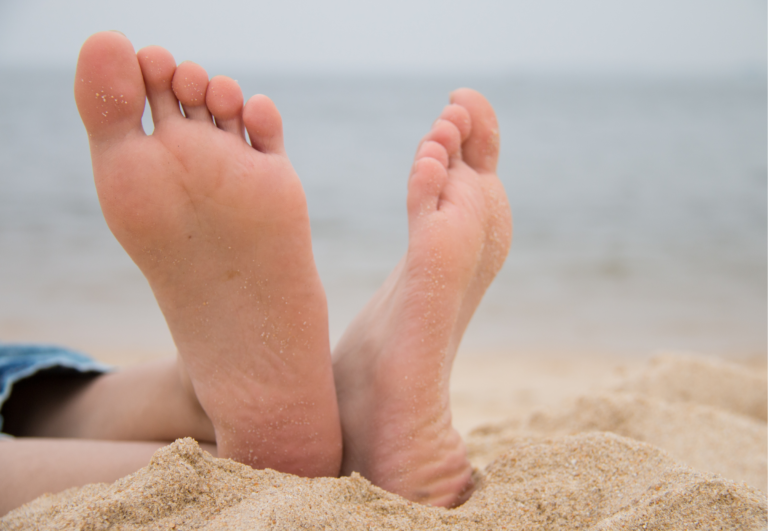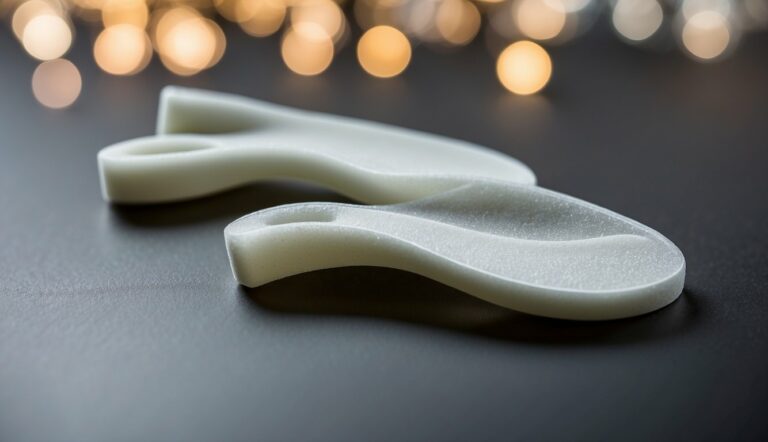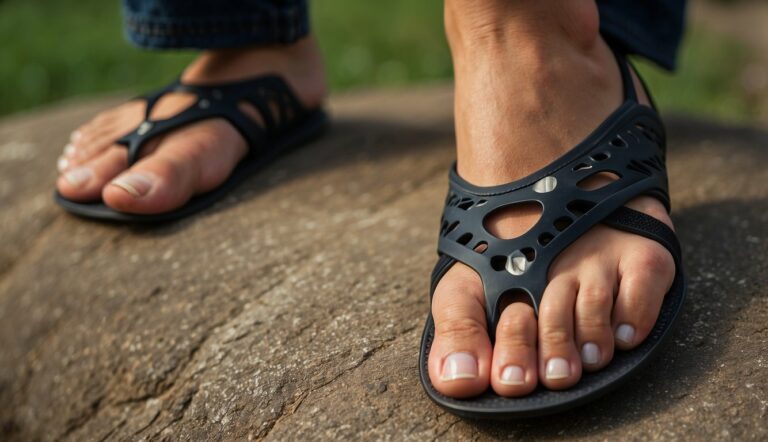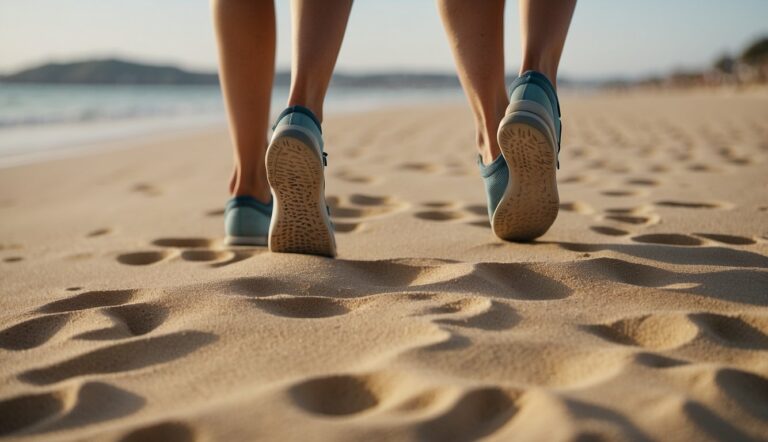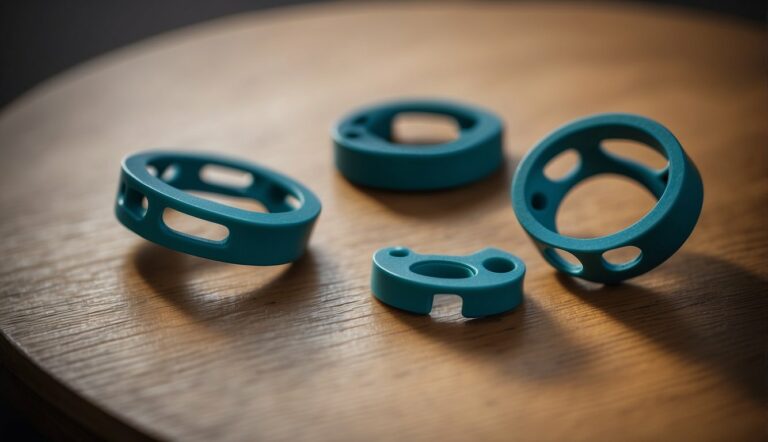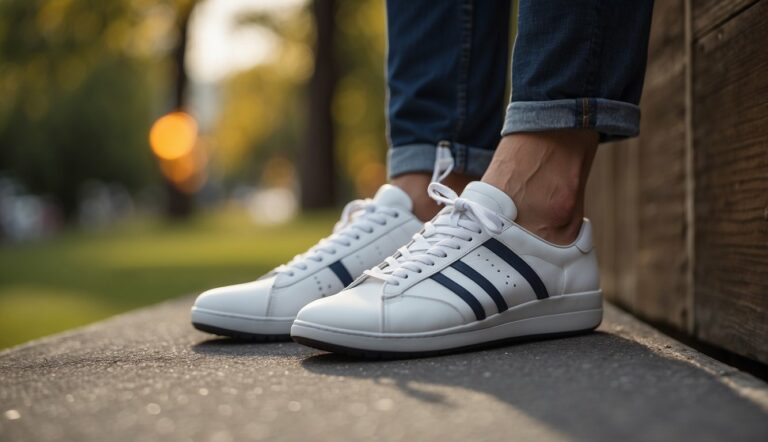Toe Spacer Stretching Routine for Runners: Enhance Flexibility and Performance
Toe spacers are becoming increasingly popular among runners looking to improve their foot health and running performance. As an avid runner and toe spacer enthusiast, I’ve personally found that incorporating a stretching routine with toe spacers can make a significant difference. This simple tool works by separating the toes, aligning them in their natural position, and allowing for a more even distribution of pressure throughout the foot. By doing so, runners can potentially reduce the risk of injury and enhance the overall health of their feet.
Integrating toe spacers into a regular stretching regimen can also contribute to better running mechanics. They offer the muscles and joints of the feet a chance to stretch out and strengthen, which is crucial considering the amount of stress they undergo during running. The following step-by-step routine includes exercises designed to maximize the benefits of toe spacers, promote foot flexibility, and support a more stable and efficient running form. It’s tailored to be accessible for runners at all levels who want to keep their feet in top condition without complicated or unnecessary steps.

Unveiling Toe Spacers: What They Are and Their Benefits
Toe spacers are designed to enhance foot function and comfort by encouraging toes to maintain their natural position. By doing so, they support proper alignment and blood flow, which are essential for runners seeking to optimize their performance in running shoes.
Toe Spacer Stretching Routine for Runners
Toe spacers can be integrated into a simple routine to aid in the alignment and health of your feet, which I’ve personally found to be beneficial:
- Toe Presses: Start by wearing toe spacers and stand flat-footed. Lift all toes off the ground and then press them down one at a time, starting from the little toe to the big toe.
- Toe Splay: With toe spacers in place, spread your toes as wide as possible, hold for a few seconds, and then relax. Repeat this action several times.
- Toe Curls: Curl your toes downward while wearing spacers, hold, then straighten them. Perform multiple repetitions.
- Flex and Point: Flex your toes back towards your shin, then point them away from your body. This can help the muscles and ligaments around the toes to stretch and strengthen.
Exploring the Varieties: Materials and Sizing
When selecting toe spacers, material and sizing are crucial for ensuring both comfort and function:
- Materials: Commonly made from silicone, gel, or rubber, each material offers a different level of firmness and flexibility.
- Sizing: Proper sizing is vital to avoid discomfort. Most brands offer a size chart to ensure a good fit.
Benefits Beyond Comfort: Alignment and Blood Flow
Aside from the obvious comfort, toe spacers can provide runners with several benefits:
- Alignment: They aid in correcting and maintaining proper toe alignment, which can prevent issues related to foot mechanics.
- Blood Flow: By reducing toe crowding, they promote better circulation, which is beneficial during long runs or periods of recovery.
- Footwear: For runners, well-aligned toes can improve the fit and function of their running shoes, leading to more efficient strides.
Using toe spacers as part of a foot care routine, along with appropriate footwear, contributes significantly to my running experience by keeping my feet in their best condition.
Identifying Common Foot Ailments Addressed by Toe Spacers
Toe spacers can be a game-changer for runners, specifically targeting ailments that arise from improper foot alignment and the repetitive stress of running. They are designed to address conditions by spreading the toes to their natural position, which can improve balance and stability.
From Bunions to Plantar Fasciitis
Bunions – Hallux valgus, more commonly known as bunions, are bony protrusions at the base of the big toe joint caused by misalignment. The regular use of toe separators can help in maintaining proper toe alignment, potentially preventing the progression of bunions.
Plantar Fasciitis – This common runner’s ailment results from inflammation of the band of tissue running across the bottom of the foot. By using toe spacers, the feet can assume a more natural posture that may support the alleviation of tension on the plantar fascia.
- Begin with a 5-minute warm-up walk.
- Insert medical-grade gel toe spacers between each toe.
- Perform calf raises while standing, which can indirectly support the plantar fascia, for 2 minutes.
- Sit down and practice flexing and extending the toes for 3 minutes.
- Walk for another 5 minutes with toe separators in place to acclimate to their feel during movement.
Addressing Hammer Toes and Neuromas
Hammer Toe – Hammer toes are deformities of the second, third, or fourth toes that cause them to bend at the middle joint. A consistent stretching routine with toe spacers can contribute to improved toe flexibility and reduce the pressure on toe joints.
Neuroma – Morton’s neuroma is a painful condition usually between the third and fourth toes, involving thickened nerve tissues. Toe spacers can separate the toes, potentially relieving the pressure on the nerves affected by neuromas.
- Focus on stretching toe flexor muscles by curling and uncurling the toes with spacers for 3 minutes.
- Perform toe “splay” exercises, spreading your toes apart actively for 15 seconds and relaxing for 5 seconds, repeated for 3 minutes.
Alleviating Pain and Preventing Injuries
Metatarsalgia – Often felt as a sharp ache or burning pain in the ball of the foot, this condition can be mitigated by using toe spacers to distribute weight more evenly across the foot.
Running Injuries – Runners often face overuse injuries. Toe spacers can aid in proper alignment, which is vital for reducing the risk of such injuries.
- Include toe spacer walking in your cool-down routine for at least 10 minutes.
- Perform toe separator stretches after runs to encourage proper toe alignment and enhance recovery.
By incorporating toe spacers into your routine, you may find relief from foot pain while also fostering conditions for improved running form and injury prevention.
Incorporating Toe Spacers into Your Running Routine
Toe spacers can enhance foot health and running performance when integrated correctly into your routine. Let’s explore how to select the best toe spacers for runners and implement them during exercise and recovery periods.
Making the Right Choice: Selection Criteria
Choosing the right toe spacers is crucial for their effectiveness. Consider the following factors:
- Material: Look for silicone or gel materials that offer flexibility and comfort.
- Fit: The spacers should fit your foot shape without causing discomfort.
- Design: Some spreaders are designed for active use in running shoes, while others are for recovery.
- Podiatrist Recommendations: A podiatrist can advise on the spacer that complements your foot structure and running style.
Routine for Incorporating Toe Spacers:
- Start by wearing the toe spacers for 5-10 minutes to get used to them.
- Gradually increase usage time by 5 minutes each session.
- Perform light foot exercises while wearing the spacers to improve toe mobility.
- Once comfortable, incorporate them into your warm-up routine before runs.
Proper Use during Runs and Recovery
During Runs:
For runners, toe spacers can potentially improve stability and alignment. However, they should be used with caution:
- Begin by using toe spacers on short runs to assess comfort.
- Pair them with well-fitted running shoes, giving preference to those with wider toe boxes or minimalist footwear for better accommodation.
- Monitor any changes in your running gait and overall comfort level.
For Recovery:
Toe spacers can be beneficial for post-run recovery:
- Include toe spacers in your cooldown routine, wearing them for 20-30 minutes while stretching or performing mobility exercises.
- Ensure proper hygiene by cleaning the spacers after each use to prevent any foot issues.
- Consult with a podiatrist for a personalized recovery routine that includes the use of toe spacers.
By selecting the appropriate toe spacers and incorporating them thoughtfully into runs and recovery, runners may enhance foot function and prevent injuries.
Complementary Practices for Optimizing Foot Health
In addition to using toe spacers, there are targeted strategies to improve foot health and function. These techniques go hand-in-hand with toe spacers to promote a holistic approach to foot care.
Stretching and Strengthening Exercises
I recommend a simple routine to stretch and strengthen the intrinsic muscles of the foot for better alignment and flexibility:
- Toe Splay: Splay your toes as wide as possible, hold for 5 seconds, and release. Repeat 10 times to improve toe mobility and strength.
- Toe Curls: Place a towel flat on the floor. Use your toes to grab the towel and pull it towards you, curl your toes in the process. Do this for 1 minute to enhance the flexibility and strength of your foot muscles.
- Marble Pickup: Drop a few marbles on the floor and pick them up with your toes, then drop them into a cup. Aim for 10-15 repetitions to boost dexterity and muscle control.
These exercises help maintain optimal foot function and complement the alignment benefits of toe spacers.
The Role of Footwear
Choosing the right footwear is critical for maintaining foot health and enhancing the effects of toe spacers:
- Proper Fit: Ensure your shoes provide enough room for the toes to move freely without being squeezed.
- Supportive Insoles: Consider insoles that support the arch and heel, promoting better foot shape and alignment.
- Breathable Materials: Select shoes made of materials that allow for proper air circulation to keep your feet dry and healthy.
Tailoring your footwear choices to your foot shape and activities can prevent problems exacerbated by incorrect shoe fit.
When to Seek Professional Advice
While toe spacers and self-care can be highly effective, there are times when consulting a professional is best:
- Persistent Pain: If discomfort continues despite regular use of toe spacers and complementary practices, see a podiatrist.
- Foot Deformities: For bunions, hammertoes, or other irregularities, professional evaluation is necessary to tailor a treatment plan.
Understanding when to seek help is as crucial as daily foot care routines. Podiatrists specialize in foot health and can provide advice on how to use toe spacers effectively within a personalized care regimen.
Listening to Your Feet: Recognizing When to Adjust or Seek Help
Effective toe spacer routines can enhance toe flexibility and mitigate foot ailments, but it’s crucial to heed your feet’s signals to prevent discomfort or injury. Let’s explore how to identify these signals and evaluate your feet regularly.
Identifying Signs of Discomfort and Misalignment
If during stretches, you notice numbness, irritation, or inflammation, your toes might tell you it’s time to adjust. Here’s a simple stretching routine:
Gentle Toe Splay:
- Spread your toes wide for 2 seconds
- Relax them for 2 seconds
- Repeat 10 times
Toe Press and Release:
- Press your toes downward, creating mild tension, for 2 seconds
- Release for 2 seconds
- Do 10 repetitions
Big Toe Isolation Stretch:
- Use your fingers to isolate and pull your big toe gently towards you
- Hold for 3 seconds, then release
- Repeat 5 times on each foot
During these exercises, any sharp pain or persistent discomfort is a clear indicator to stop and potentially consult a podiatrist, especially if you suspect a misalignment such as hammer toes.
The Importance of Regular Evaluation
It’s vital to regularly assess your feet’s health and toe flexibility. Consider the following checklist:
- Daily Check: Look for changes in toe alignment or signs of irritation.
- Weekly Evaluation: Notice any patterns of discomfort after running or stretching.
- Monthly Assessment with Toe Spacers:
- Wear toe spacers for 30 minutes.
- Evaluate any changes in spacing or freedom of movement.
Should discomfort persist or you find abnormalities in toe placement and movement, scheduling an appointment with a podiatrist is a proactive step. Remember, thumbing through online resources is no substitute for professional advice, and timely intervention can abate the escalation of common foot ailments.
